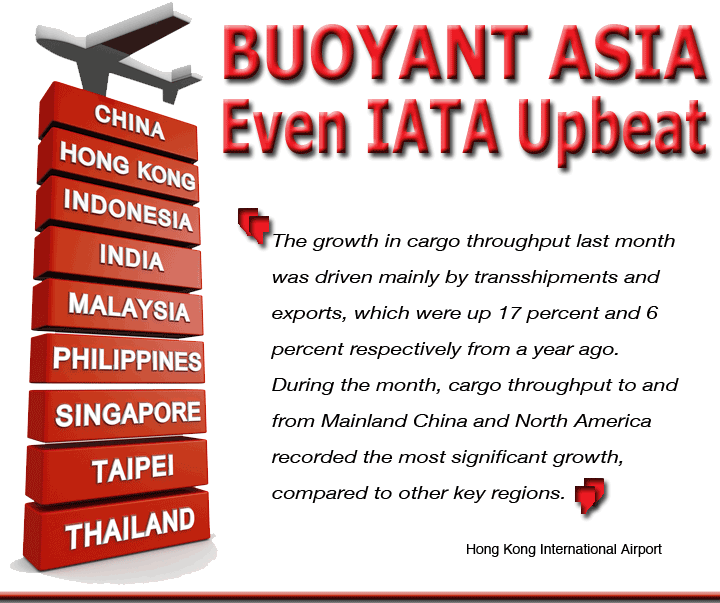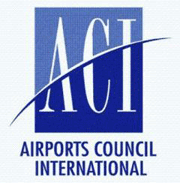
Like a midsummer
night’s dream, confidence in major air freight markets is surging
and is now supported by evidence of pricing gains on lanes out of Asia.
Drewry’s East-West Air Freight Price
Index was up 2.3 points in June and is now considerably higher than
a year earlier, although the analyst warned that more seasonal bellyhold
capacity entering the market over the summer could exert downward pressure
in the coming months.
One leading handler in South East Asia
told FlyingTypers that spot rates increases
in recent weeks had been “encouraging,” while a leading
forwarder said the unexpected spike in volumes over the last month had
prompted “some interesting gains on rates which the industry desperately
needs.”
The latter added that capacity restrictions
out of China linked to military exercises could further boost spot rates,
although another forwarder countered that the impact of the air space
restrictions was minimal so far, as the flights affected were mostly
regional short-hauls.
The Stifel Logistics Confidence Index
has ebbed and flowed for much of 2014, but was up 0.9 points in July
from 56.1 in June. Of more significance, the air freight segment of
the survey jumped to 50.8 this month, a move indicative of “improving
conditions with all but one lane above the 50-level, a situation not
seen since November 2013,” according to analysis by Transport
Intelligence.
Stifel’s data revealed that the
Asia to Europe trade lane noted the biggest month-on-month gain in July
by climbing 3.3 points to 52.4, a jump Ti said was most likely due to
improving economic conditions in Europe.
IATA is also increasingly upbeat.
Its quarterly survey of airline CFOs and
heads of cargo in July revealed expectations of “further growth
in profitability” bolstered by “confidence that air transport
volumes will continue to expand over the next 12 months and support
growth in yields, and that cost pressures will remain broadly stable.”
IATA said a majority of respondent CFOs
expected passenger and cargo volumes to expand over the year ahead due
to the improvement in demand drivers.
“Yields are expected to increase
during the year ahead, supported by the outlook for growth in air transport
demand and potentially also by capacity management,” said IATA
in a statement.
 The
most current handling figures available suggest such upbeat outlooks
are built on solid foundations. Airports Council International’s
latest Asia Pacific data revealed that the region’s airports recorded
year-on-year freight growth of +5.6 percent in May and had handled 5
percent more cargo over the first five months of the year than in the
same period of 2013.
The
most current handling figures available suggest such upbeat outlooks
are built on solid foundations. Airports Council International’s
latest Asia Pacific data revealed that the region’s airports recorded
year-on-year freight growth of +5.6 percent in May and had handled 5
percent more cargo over the first five months of the year than in the
same period of 2013.
Hong Kong International Airport, the world’s
leading international cargo hub, has also seen steady expansion in volumes.
Over the first six months of 2014 cargo throughput rose by 6.3 percent
year-on-year to 2.1 million tons, aided by a 7.3 percent surge in June
when 361,000 tons were handled.
“The growth in cargo throughput
last month was driven mainly by transshipments and exports, which were
up 17 percent and 6 percent respectively from a year ago,” said
HKIA. “During the month, cargo throughput to and from Mainland
China and North America recorded the most significant growth, compared
to other key regions.”
 The Association of Asia Pacific Airlines
also said its members had seen continued growth in demand in June, helped
by positive consumer and business sentiment in major developed economies.
The Association of Asia Pacific Airlines
also said its members had seen continued growth in demand in June, helped
by positive consumer and business sentiment in major developed economies.
Demand jumped 4.7 percent year-on-year,
measured in freight ton kilometers (FTK), and with capacity up 3.4 percent
this saw the average international freight load factor rise for the
second consecutive month.
Air freight demand was up 4.6 percent
over the first half of the year “underpinned by a long awaited
pick-up in global trade activities,” concluded AAPA Director General
Andrew Herdman.
SkyKing






